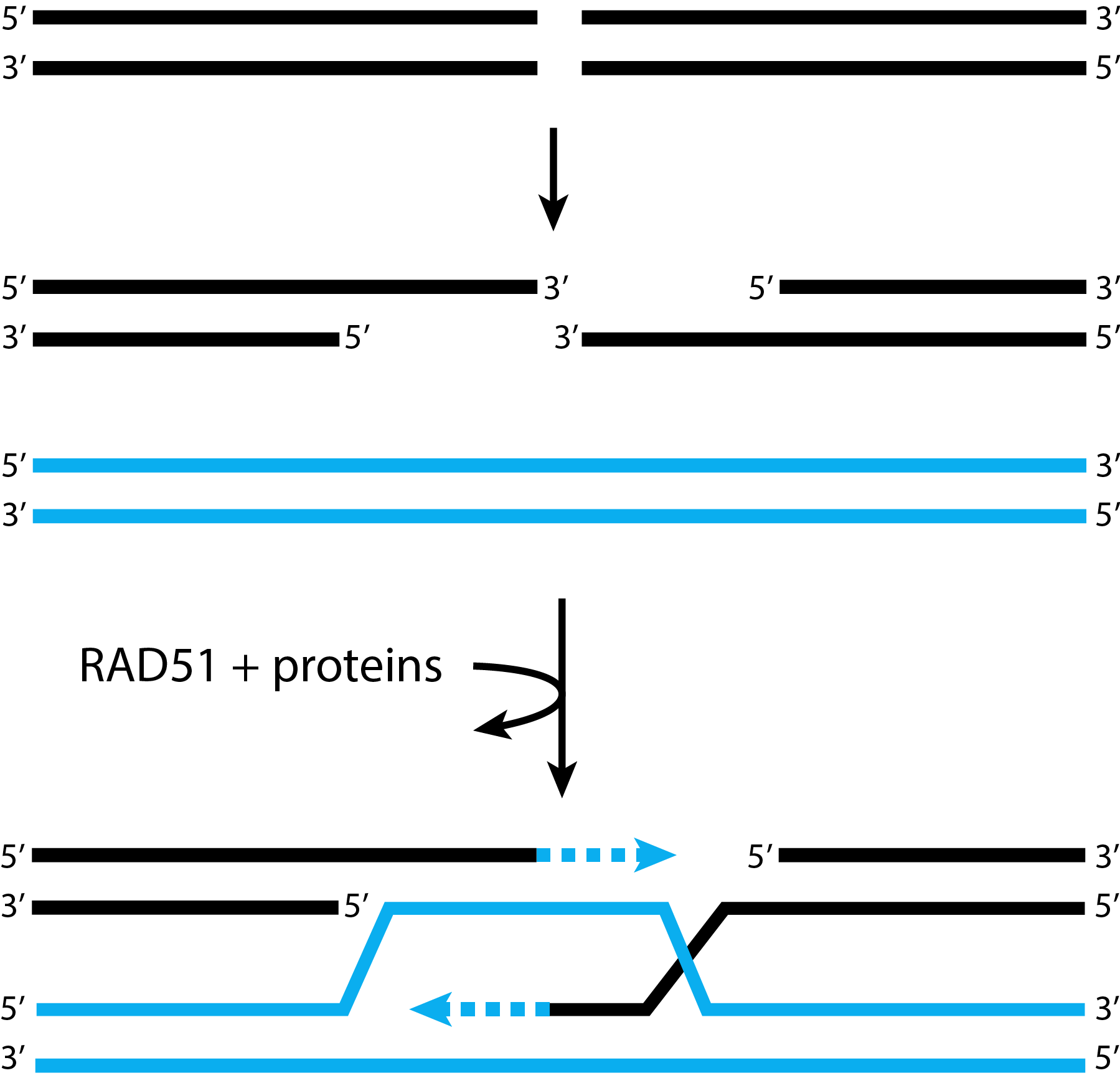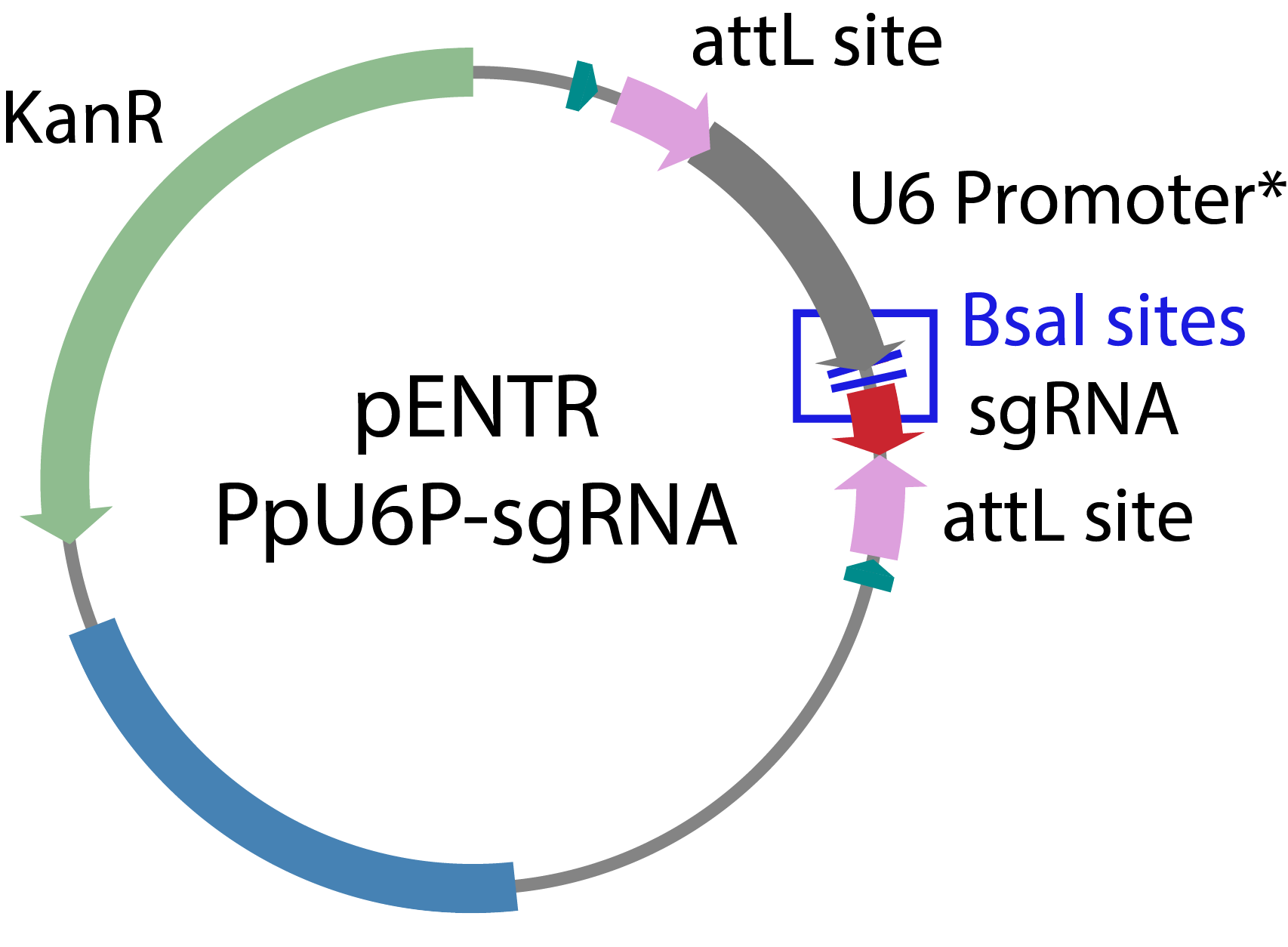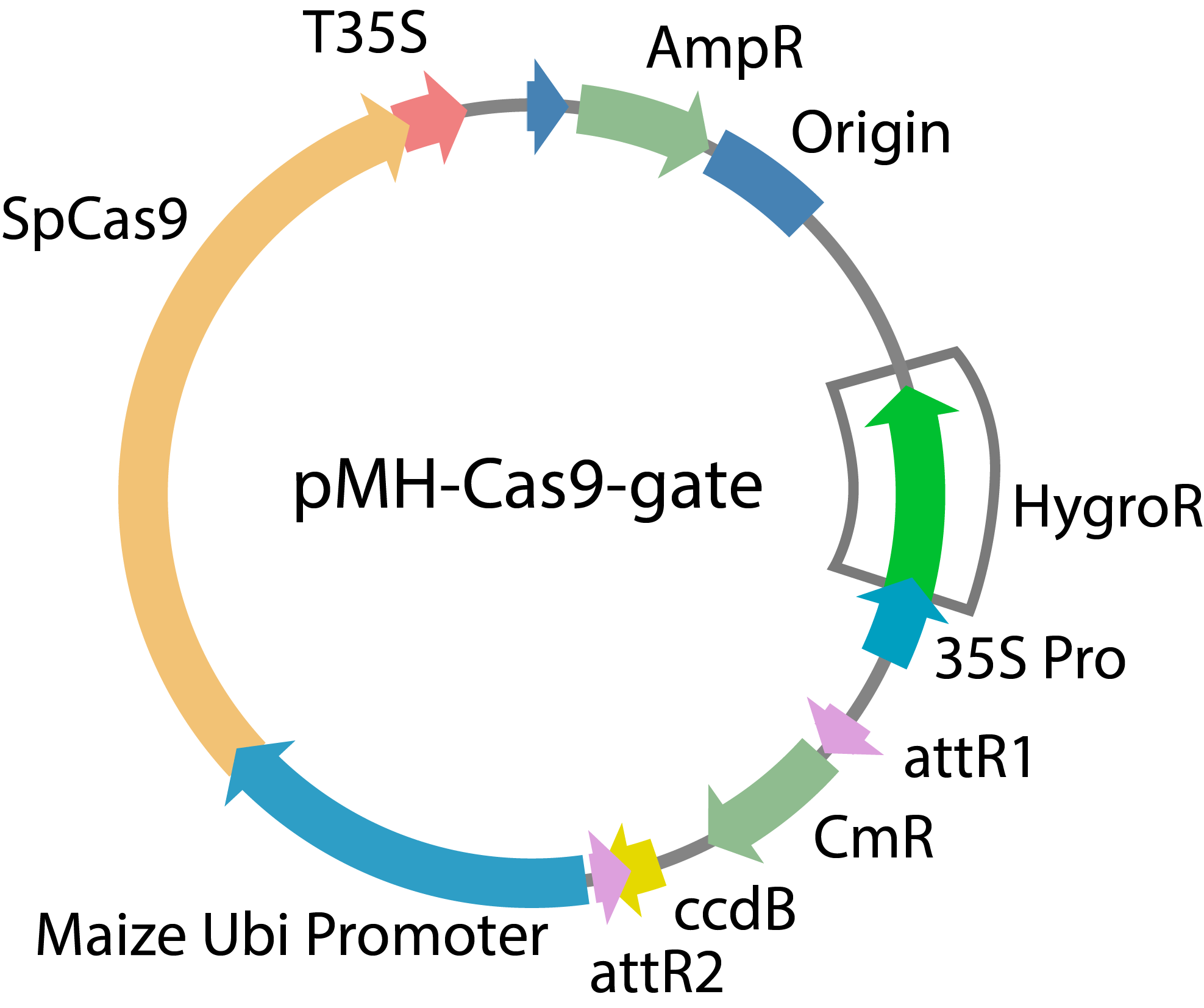Our CRISPR/Cas9 System — Efficient, Modular, and Powerful
A moss vector system based on vectors previously developed for Rice (Miao et al., 2013).
No need for gene synthesisOur CRISPR system eliminates the need to synthesize long stretches of DNA. Instead, simple oligonucleotides of your protospacer sequence can be ligated into our various entry clones using the Type IIS restriction enzyme, BsaI.
|
Transform up to 12 sgRNAs in one, transient transformationTaking advantage of multisite Gateway™ cloning, it is possible to insert up to four sgRNAs into each of our three destination vectors for expression of up to 12 different sgRNAs in a single protoplast.
|
Co-transform a template for accurate repairIntroduce your own small- or large-scale changes using the endogenous Homology-Directed Repair pathway when you add a template containing regions of homology flanking the predicted double-strand break site.
|
Ensure a complete knockout using our Stop Codon CassetteCo-transform our plasmid containing stop codons in all three open reading frames flanked by regions of homology to ensure a complete knockout of your gene of interest with easy genotyping.
|
sgRNA Entry VectorsEach entry vector contains two BsaI sites downstream of the Physcomitrella U6 Promoter to create unique overhangs for seamless ligation of your protospacer oligo.
|
pENTR-U6P-sgRNA-L1L2 |
pENTR-U6P-sgRNA-L1R5 |
pENTR-U6P-sgRNA-L5L2 |
pENTR-U6P-sgRNA-L1L4 |
pENTR-U6P-sgRNA-R4R3 |
pENTR-U6P-sgRNA-L3L2 |
pENTR-U6P-sgRNA-L5L4 |
Destination VectorsEach destination vector contains Cas9 driven by the Maize Ubiquitin Promoter, as well as a Gateway™ cassette for easy and directional recombination of each entry vector containing a unique sgRNA. Each plasmid expresses a different antibiotic resistance gene for selection in moss, allowing transformation of all three simultaneously. Each plasmid can also carry up to four sgRNAs with multisite Gateway™.
|
pMH-Cas9-GateCas9 and sgRNA expression vector with hygromycin resistance. |
pMK-Cas9-GateCas9 and sgRNA expression vector with G418 resistance. |
pZeo-Cas9-GateCas9 and sgRNA expression vector with Zeocin resistance. |
Homology-Directed RepairThese vectors can be used in the endogenous Homology-Directed Repair pathway when the Cas9 nuclease causes a double-strand break at your site of interest. |
pGEM-gateA generic destination vector containing the Gateway™ cassette with R1 and R2 sites for easy insertion of your homology regions with specific changes. |
pENTR-R4R3-stopA second-position entry vector containing stop codons in all three open reading frames and a multiple cloning site for easy genotyping. |
Homology-Directed Repair Tagging VectorsThese second-position vectors can be inserted between homology regions to tag your gene of interest after the Cas9-induced double-strand break. |
mEGFP Tagging VectorsEach is available with or without a stop codon for C- and N-terminal tagging, respectively. |
pENTR-R4R3-mEGFP |
pENTR-R4R3-2xmEGFP |
pENTR-R4R3-3xmEGFP |
mRuby Tagging VectorsEach is available with or without a stop codon for C- and N-terminal tagging, respectively. |
pENTR-R4R3-mRuby |
pENTR-R4R3-2xmRuby |
pENTR-R4R3-3xmRuby |







